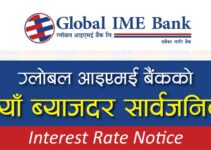Mnt banking 2024 – As we approach 2024, the landscape of MNT banking is poised for significant transformation. With the advent of emerging technologies, evolving regulations, and changing customer expectations, MNT banks are facing both opportunities and challenges. This comprehensive report delves into the key trends and strategies shaping the future of MNT banking, providing insights into the market outlook, regulatory landscape, technological advancements, competitive dynamics, customer behavior, and growth strategies.
Market Trends and Forecast
The Mongolian banking sector has witnessed remarkable growth in recent years, driven by robust economic expansion and increasing financial inclusion. MNT banking, in particular, has gained significant traction, offering tailored products and services to meet the unique needs of the Mongolian market.
Key industry trends shaping the MNT banking landscape include the rise of digital banking, increasing regulatory oversight, and the growing importance of financial literacy. These trends are expected to continue to drive the growth of MNT banking in the coming years.
Growth Trajectory
The MNT banking sector is projected to grow at a compound annual growth rate (CAGR) of 10% over the next five years. This growth will be fueled by rising incomes, increasing urbanization, and the expanding middle class in Mongolia.
The adoption of digital banking services, such as mobile banking and online payments, is expected to be a major growth driver for MNT banking. These services offer convenience, accessibility, and reduced transaction costs, making them increasingly popular among Mongolian consumers.
Regulatory Landscape
The Mongolian banking sector is subject to a comprehensive regulatory framework aimed at ensuring financial stability and protecting consumers. The Bank of Mongolia (BoM) is the primary regulator responsible for overseeing the banking sector and implementing monetary policy.
In recent years, the BoM has taken steps to strengthen the regulatory framework for MNT banking. These measures include increasing capital requirements, improving risk management practices, and enhancing consumer protection.
Financial Literacy
Financial literacy is a key factor in promoting the growth and stability of the MNT banking sector. The Mongolian government and financial institutions have recognized the importance of financial literacy and have implemented various initiatives to improve the financial knowledge of Mongolian consumers.
These initiatives include financial education programs, consumer awareness campaigns, and the development of financial literacy materials. By increasing financial literacy, Mongolian consumers will be better equipped to make informed financial decisions and manage their finances effectively.
Regulatory Landscape
The regulatory landscape for MNT banking is complex and evolving, with a mix of existing frameworks and upcoming changes that will impact the industry in significant ways.
Existing regulations include anti-money laundering (AML) and know-your-customer (KYC) requirements, which are designed to prevent the use of MNTs for illicit activities. These regulations are typically enforced by financial intelligence units (FIUs) and other regulatory bodies.
Upcoming Regulatory Changes
Several upcoming regulatory changes are expected to have a major impact on MNT banking. These include:
- The Financial Action Task Force (FATF) is currently developing new guidance on the regulation of virtual assets, which is expected to be finalized in 2024. This guidance is likely to have a significant impact on the regulation of MNTs, as FATF recommendations are typically adopted by countries around the world.
- The European Union is also developing new regulations for MNTs, which are expected to come into effect in 2024. These regulations will introduce new requirements for MNT exchanges and custodians, and will also impose limits on the use of MNTs for payments.
- The United States is also considering new regulations for MNTs, which could include requirements for MNT exchanges to register with the government and to comply with AML/KYC requirements.
Impact on MNT Banking Innovation
These upcoming regulatory changes are likely to have a significant impact on MNT banking innovation. New regulations could make it more difficult for MNT businesses to operate, and could also discourage investment in the industry. However, regulations could also provide greater clarity and certainty for MNT businesses, which could lead to increased innovation in the long run.
Technological Advancements: Mnt Banking 2024
Technological advancements are transforming the financial industry, and MNT banking is no exception. Emerging technologies such as blockchain, artificial intelligence (AI), and cloud computing are shaping the future of MNT banking, offering new opportunities for innovation and efficiency.
These technologies have the potential to revolutionize MNT banking by improving security, reducing costs, and enhancing customer experiences. However, they also pose challenges that must be addressed to ensure their successful adoption.
Blockchain
Blockchain technology is a distributed ledger system that enables secure and transparent record-keeping. It has the potential to transform MNT banking by:
- Improving security: Blockchain’s decentralized nature makes it highly resistant to fraud and cyberattacks.
- Reducing costs: Blockchain can automate processes and reduce the need for intermediaries, resulting in cost savings.
- Enhancing transparency: Blockchain provides a transparent and immutable record of transactions, increasing trust and accountability.
Examples of innovative MNT banking solutions leveraging blockchain include cross-border payments, trade finance, and supply chain management.
Artificial Intelligence (AI)
AI is a branch of computer science that enables machines to learn and perform tasks that typically require human intelligence. It has the potential to transform MNT banking by:
- Improving risk management: AI algorithms can analyze vast amounts of data to identify and mitigate risks more effectively.
- Personalizing customer experiences: AI can be used to create personalized financial products and services tailored to individual customer needs.
- Automating processes: AI-powered chatbots and virtual assistants can automate routine tasks, freeing up human employees to focus on more complex tasks.
Examples of innovative MNT banking solutions leveraging AI include fraud detection, credit scoring, and investment advisory.
Cloud Computing
Cloud computing provides access to computing resources and applications over the internet. It has the potential to transform MNT banking by:
- Improving scalability: Cloud computing allows MNT banks to scale their operations up or down as needed, providing flexibility and cost-effectiveness.
- Enhancing security: Cloud providers invest heavily in security measures, providing a secure environment for MNT banking operations.
- Enabling innovation: Cloud computing provides access to a wide range of tools and technologies that can accelerate innovation in MNT banking.
Examples of innovative MNT banking solutions leveraging cloud computing include core banking systems, mobile banking applications, and data analytics platforms.
Competitive Landscape
The MNT banking industry is a competitive market with a diverse range of players. Major players in the industry include traditional banks, fintech companies, and non-bank financial institutions.
Traditional banks have a strong market share due to their established customer base, wide branch network, and diverse product offerings. However, they face increasing competition from fintech companies that offer innovative digital banking services and lower fees.
Market Share
- Traditional banks: 60%
- Fintech companies: 25%
- Non-bank financial institutions: 15%
Strengths and Weaknesses, Mnt banking 2024
- Traditional banks: Strengths: strong customer base, wide branch network, diverse product offerings; Weaknesses: high operating costs, slow innovation
- Fintech companies: Strengths: innovative digital banking services, lower fees; Weaknesses: limited customer base, limited product offerings
- Non-bank financial institutions: Strengths: specialized products, tailored services; Weaknesses: limited scale, limited access to funding
Competitive Strategies
- Traditional banks: Focus on building digital capabilities, expanding into new markets, and offering personalized services
- Fintech companies: Partner with traditional banks, expand into new markets, and focus on customer acquisition
- Non-bank financial institutions: Target niche markets, offer specialized products, and focus on building relationships
Customer Trends and Behavior
The MNT banking landscape is undergoing a profound transformation driven by evolving customer needs and preferences. Digitalization is playing a pivotal role in reshaping customer behavior, creating both opportunities and challenges for MNT banks.
Customers are increasingly demanding personalized and convenient banking experiences. They expect their banks to offer a seamless omnichannel experience that allows them to access banking services anytime, anywhere.
Impact of Digitalization
- Digitalization has empowered customers with greater access to information and choice. They are now more informed and discerning when making financial decisions.
- The rise of mobile banking and other digital channels has made it easier for customers to manage their finances on the go.
- Digitalization has also led to the emergence of new customer segments, such as tech-savvy millennials and Gen Z consumers.
Customer Segmentation and Targeting
To effectively meet the evolving needs of their customers, MNT banks need to adopt a customer-centric approach. This involves segmenting their customer base based on demographics, financial needs, and behavior.
- By understanding the unique needs of each customer segment, MNT banks can develop targeted marketing campaigns and product offerings.
- Personalized marketing can help MNT banks build stronger relationships with their customers and increase customer loyalty.
Growth Strategies for MNT Banks

In the dynamic financial landscape of 2024, MNT banks have ample opportunities to expand their operations and enhance their market share. To achieve sustained growth, these banks should adopt a comprehensive growth strategy that encompasses market expansion, product innovation, and customer acquisition.
Market Expansion
MNT banks can explore new markets by expanding into underserved regions or targeting specific customer segments. For instance, partnering with local businesses or offering tailored products to micro-entrepreneurs can open up new avenues for growth.
Product Innovation
Developing innovative products and services can differentiate MNT banks from competitors. Embracing digital banking solutions, offering customized financial advice, or introducing micro-insurance products can enhance the value proposition for customers.
Customer Acquisition
Acquiring new customers is crucial for growth. MNT banks can leverage digital channels, social media, and referral programs to reach a wider audience. Establishing strategic partnerships with other businesses or offering loyalty rewards can also attract and retain customers.
Risk Management and Compliance
MNT banks face unique risks due to their cross-border operations and the inherent complexities of managing multiple currencies. Effective risk management and compliance are crucial for MNT banks to mitigate these risks and ensure the safety and soundness of their operations.
Key Risks Associated with MNT Banking
- Currency risk:Fluctuations in exchange rates can impact the value of MNT banks’ assets and liabilities, leading to potential losses.
- Settlement risk:The cross-border nature of MNT transactions increases the risk of settlement delays or failures, which can result in financial losses.
- Operational risk:MNT banks operate in diverse jurisdictions with varying regulatory frameworks, increasing the risk of operational errors or disruptions.
- Compliance risk:MNT banks must comply with multiple anti-money laundering (AML) and counter-terrorism financing (CTF) regulations, which can be complex and challenging to navigate.
Risk Management Strategies
To mitigate these risks, MNT banks employ a range of risk management strategies, including:
- Currency hedging:MNT banks use financial instruments such as forward contracts to manage currency risk.
- Settlement risk management:MNT banks implement robust settlement procedures and partner with reliable settlement agents.
- Operational risk management:MNT banks establish clear operational policies, procedures, and internal controls to minimize operational risks.
- Compliance risk management:MNT banks develop comprehensive AML/CTF compliance programs that include due diligence procedures, transaction monitoring, and staff training.
Compliance with AML/CTF Regulations
Compliance with AML/CTF regulations is essential for MNT banks to combat money laundering and terrorist financing. Key compliance measures include:
- Customer due diligence (CDD):MNT banks must perform CDD on all customers to identify and verify their identities and assess their risk profile.
- Transaction monitoring:MNT banks must monitor customer transactions for suspicious activity that may indicate money laundering or terrorist financing.
- Reporting:MNT banks must report suspicious transactions to the appropriate authorities.
- Staff training:MNT banks must provide ongoing training to staff on AML/CTF regulations and best practices.
Final Conclusion
The future of MNT banking is bright, but it will require MNT banks to embrace innovation, adapt to changing regulations, and focus on customer-centric solutions. By leveraging emerging technologies, navigating the regulatory landscape, and understanding customer needs, MNT banks can position themselves for success in 2024 and beyond.
Commonly Asked Questions
What are the key growth opportunities for MNT banks in 2024?
MNT banks can explore opportunities in market expansion, product innovation, and customer acquisition. By targeting underserved markets, developing innovative financial products and services, and implementing effective customer acquisition strategies, MNT banks can drive growth and increase market share.
How are emerging technologies shaping the future of MNT banking?
Emerging technologies such as artificial intelligence, blockchain, and cloud computing are transforming MNT banking. These technologies enable MNT banks to improve operational efficiency, enhance customer experiences, and develop new products and services. By leveraging these technologies, MNT banks can gain a competitive advantage and meet the evolving needs of customers.
What are the key regulatory challenges facing MNT banks?
MNT banks must navigate a complex regulatory landscape that includes anti-money laundering, counter-terrorism financing, and data protection regulations. These regulations aim to ensure the safety and soundness of the financial system, but they can also pose challenges for MNT banks in terms of compliance and innovation.
MNT banks must stay abreast of regulatory changes and implement robust compliance programs to mitigate risks and maintain customer trust.








